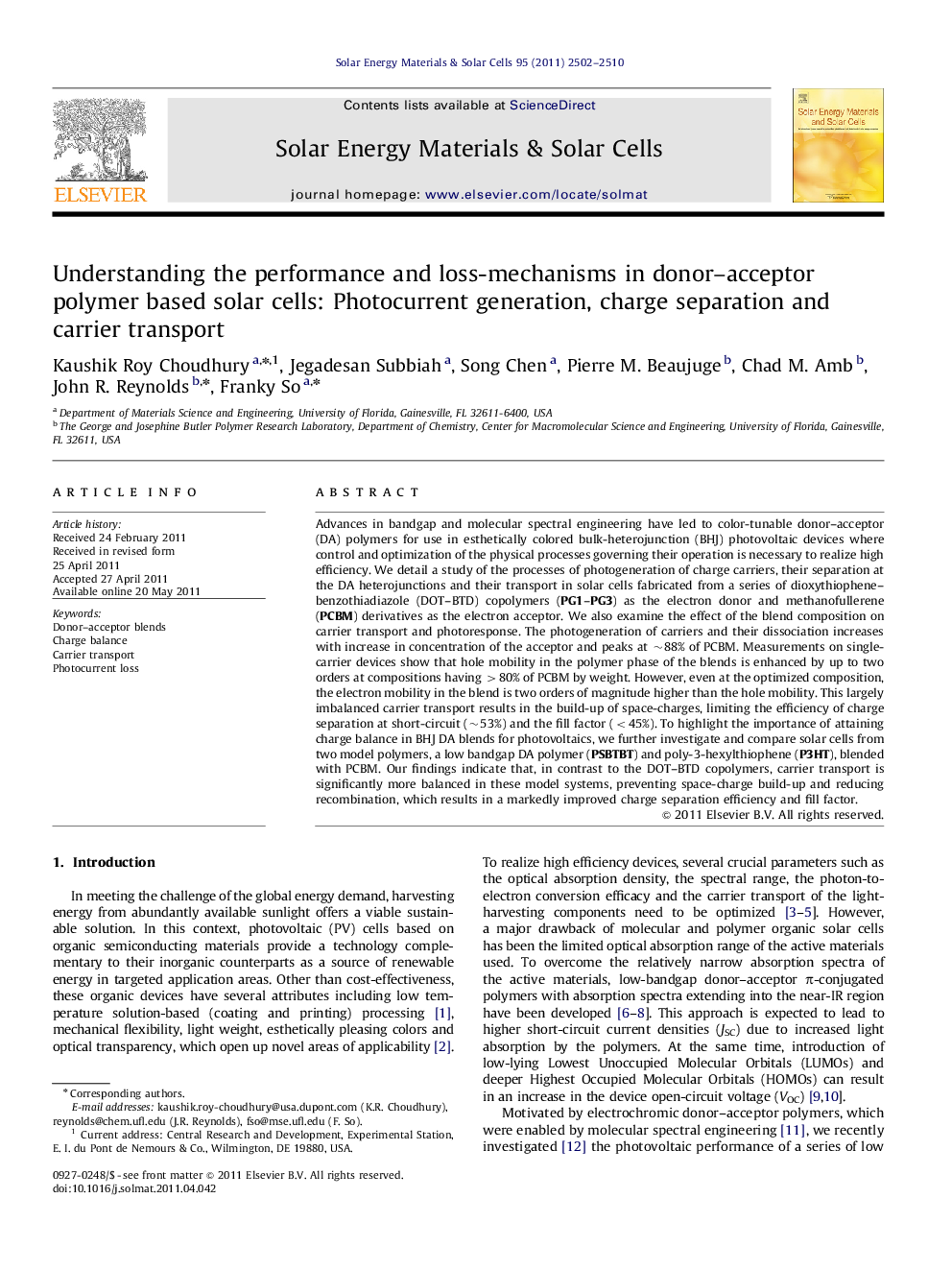| کد مقاله | کد نشریه | سال انتشار | مقاله انگلیسی | نسخه تمام متن |
|---|---|---|---|---|
| 78813 | 49342 | 2011 | 9 صفحه PDF | دانلود رایگان |

Advances in bandgap and molecular spectral engineering have led to color-tunable donor–acceptor (DA) polymers for use in esthetically colored bulk-heterojunction (BHJ) photovoltaic devices where control and optimization of the physical processes governing their operation is necessary to realize high efficiency. We detail a study of the processes of photogeneration of charge carriers, their separation at the DA heterojunctions and their transport in solar cells fabricated from a series of dioxythiophene–benzothiadiazole (DOT–BTD) copolymers (PG1–PG3) as the electron donor and methanofullerene (PCBM) derivatives as the electron acceptor. We also examine the effect of the blend composition on carrier transport and photoresponse. The photogeneration of carriers and their dissociation increases with increase in concentration of the acceptor and peaks at ∼88% of PCBM. Measurements on single-carrier devices show that hole mobility in the polymer phase of the blends is enhanced by up to two orders at compositions having >80% of PCBM by weight. However, even at the optimized composition, the electron mobility in the blend is two orders of magnitude higher than the hole mobility. This largely imbalanced carrier transport results in the build-up of space-charges, limiting the efficiency of charge separation at short-circuit (∼53%) and the fill factor (<45%). To highlight the importance of attaining charge balance in BHJ DA blends for photovoltaics, we further investigate and compare solar cells from two model polymers, a low bandgap DA polymer (PSBTBT) and poly-3-hexylthiophene (P3HT), blended with PCBM. Our findings indicate that, in contrast to the DOT–BTD copolymers, carrier transport is significantly more balanced in these model systems, preventing space-charge build-up and reducing recombination, which results in a markedly improved charge separation efficiency and fill factor.
Current density–voltage curves for solar cells made from different polymers showing the effect of charge balance on device performance.Figure optionsDownload as PowerPoint slideHighlights
► Photogenerated carrier generation and transport in polymer solar cells were studied.
► Charge separation efficiency was limited by imbalanced carrier transport.
► Systems with balanced transport results in markedly improved efficiency.
Journal: Solar Energy Materials and Solar Cells - Volume 95, Issue 8, August 2011, Pages 2502–2510